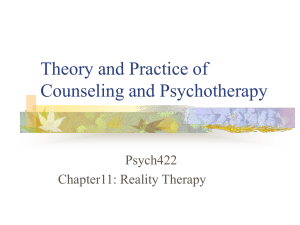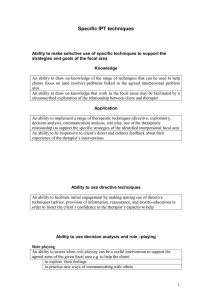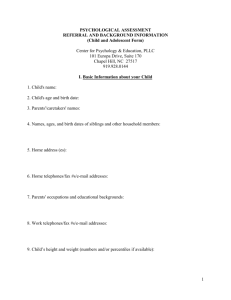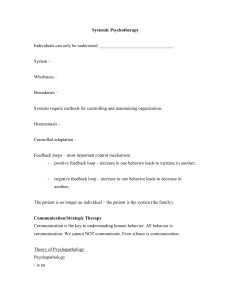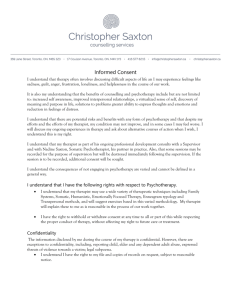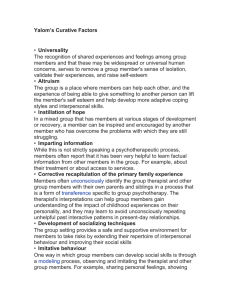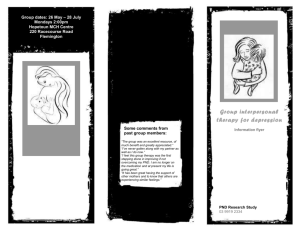What is Art Therapy - Expressive Therapies Center
advertisement
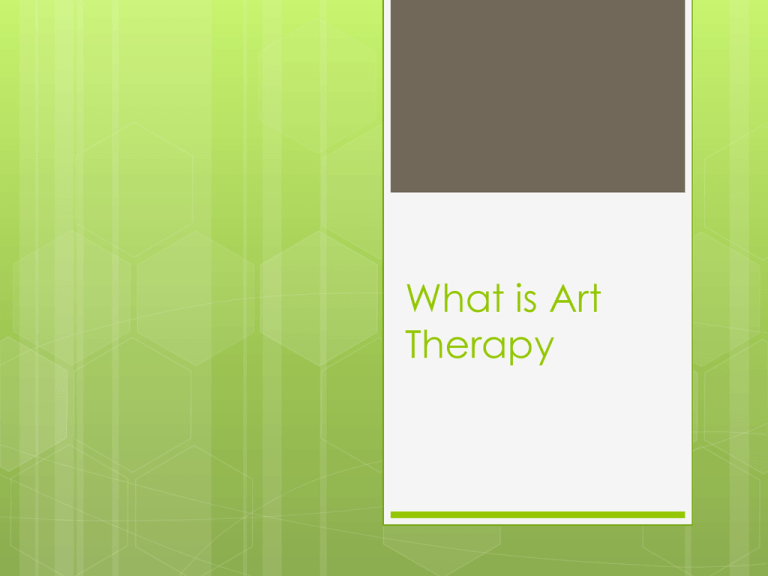
What is Art Therapy Historical two roads Art As Therapy Art Psychotherapy It is really a continuum of Practice and most art therapists use both. Art As Therapy embodies the idea that art making is, in and of itself, therapeutic and that the creative process is a growth-producing experience. Art Psychotherapy embraces the idea that art is a means of symbolic communication and expresses personality, emotions and other aspects of human experience. In essence, art expressions are used to enhance verbal exchanges between the therapist and the client in this approach. A combined Definition(Cathy Malchiodi) Art therapy is the application of the visual arts and the creative process within a therapeutic relationship, to support, maintain, and improve the psychosocial, physical, cognitive and spiritual health of individuals of all ages. It is based on current and emerging research that art making is a health-enhancing practice that positively impacts the quality of life. Art therapists are credentialed professionals who purposively use specific art-based approaches with children, adults, groups and families to support, maintain, and improve overall health, physical, emotional and cognitive functioning, interpersonal skills, personal development, and quality of life. Interpersonal Experience Art therapy is an interpersonal experience in which a therapist facilitates, guides, witnesses and responds to an individual’s art process and art expressions, based on best practices and current and emerging research. Different from Self-help and art education Art therapy is different than self-help experiences in that there is a helping professional and an individual [family or group] seeking assistance from a therapist to make changes. The relationship between a therapist, an individual, and the art process and art products is essential to art therapy and includes purposeful dialogue and specific therapeutic interventions in response to both process and product. Who does it help people experiencing developmental, medical, educational, and social or psychological impairment those who have survived trauma resulting from combat, abuse, and natural disaster; persons with adverse physical health conditions such as cancer, traumatic brain injury, and other health disability; and persons with autism, dementia, depression, and other disorders. Where does it happen Private practice Mental and physical hospitals Prisons Community programs Schools Mental health facilities Veteran Centers Day programs Nursing homes Rehab Facilities Shelters Theoretical Orientations Psychodynamic Humanistic Phenomenological Developmental Cognitive Jungian Artistic Gestalt Personality Behavioral Theory Developmental stages Expressive Therapies Continuum more Materials and Media Unlimited Traditionally: drawing, painting and clay My specialty is film and digital media How to become an art therapist Undergraduate degree with at least 18 credits of studio and 12 credits of psychology Masters of Art Therapy Program Credential attainment after graduation from the ATCB (ATR and ATR-BC) Licensing by the state Follow the ethics Code of Professional Practice
